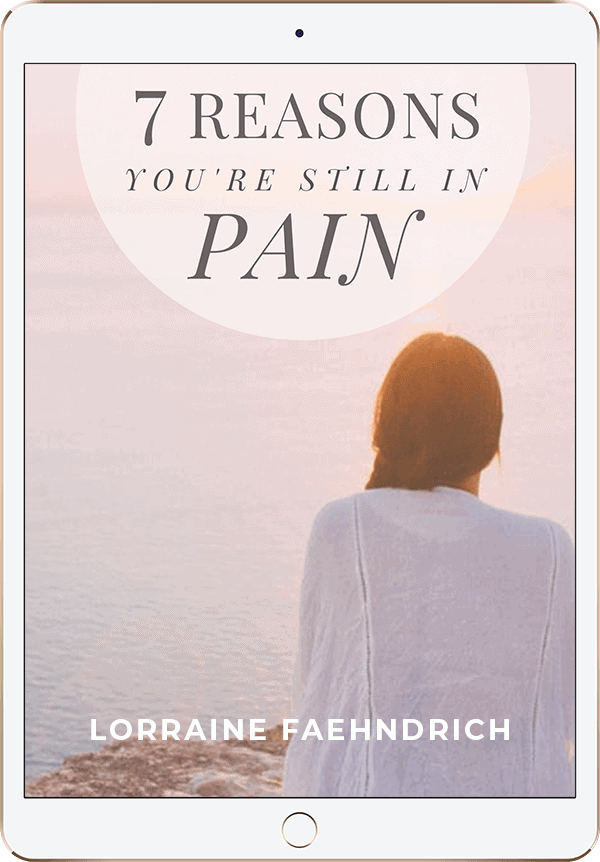
Boundaries: What they are, and why you need them to relieve pelvic pain.
It started with a disagreement.
For hours, I had been fighting off the urge to call back one more time. I was angry and wanted to be heard and acknowledged. But, I knew from experience that that was not likely to go well.
Despite that, I was having difficulty letting go and moving on.
Have you ever felt like that?
After many years of doing mind body work, I know that when this happens what I need, more than convincing someone else to validate my perspective, is to make space for myself and my emotions.
And to do that, I need a boundary.
What is a boundary?
Your boundary is an energetic container, that when strong, can help you to distinguish between your thoughts, emotions, needs, intuition, and desires…..and everyone else’s. According to Karla McLaren, author of The Language of Emotions, your boundary corresponds to the space around you that your brain recognizes as yours.
The word boundary tends to create confusion. For some it conjures up ideas of pushing people away, or fear of not being liked or accepted.
But boundaries, when healthy, have nothing to do with other people (at least not at first.), they are all about us.
Why you need a healthy boundary.
Well for starters, if you don’t have one and use it, your body is likely to create them for you in the form of chronic pain and illness (including chronic pelvic and sexual pain). But there are even more important benefits of healthy boundaries…all of which decrease internal stress and tension, help you live authentically, align with and live your soul’s purpose, and ultimately relieve pain!
Here are some of the other many benefits of healthy boundaries:
- They give you permission to be fully who you are – and like who you are – even when people treat or respond to you in ways that make you temporarily forget that.
- Having clear boundaries, allows you to be closer to the people and experiences you want to be close to…and move away from the people and experiences that are not good for you. (And they help you tell the difference.)
- Healthy boundaries allow you to speak up and share your truth with clarity and confidence… and without anger, resentment, or an agenda. Which allows people to hear you.
- Recognizing, using and honoring your boundaries helps you repair your relationship with yourself. (Boundaries have not only helped me take better care of myself, they’ve helped me reclaim the truth of who I am after years of being told I was selfish and too much.)
- Boundaries are magical! When you create, and use them you start to feel free. They are an antidote to feeling stuck, confused, frustrated, angry, and fearful.
How to create healthy boundary.
Creating a healthy boundary is a process. It involves practice in the form of using your imagination, getting curious, trying things out, and noticing the results.
You begin by imagining that you have a boundary…which helps you become aware of where it should be, how it would feel, and how it could be operating.
Here are the steps…
- Imagine a bubble around your body that is about an arm’s length away from your body in every direction, above your head and below your feet, in front of you and behind you.
- Next, imagine lighting up the edge of your bubble with a bright color (or if you like imagine setting it in flames).
- Recognize that this boundary creates a safe space where you can welcome, feel and accept all of your thoughts and emotions, and all of the sensations in your body, without any of it impacting anyone else – and without anyone else’s thoughts or emotions coming in without your permission.
- Breathe and start to get a sense of what it feels like to have this protected space.
- As you go through your day imagine your boundary when you need it. This may be before you interact with others, before you make decisions, when you’re feeling emotions, or in my case…after you’ve had a disagreement that you’re having trouble letting go of. Remind yourself that you are allowed to be fully yourself in this protected space – including allowing all the emotions and sensations in your body, without taking on anyone else’s thoughts, emotions, or expectations.
- Then get curious about what’s yours and what’s not.
So, for example, when I noticed that urge to pick up the phone for the third time, before I did anything else, I imagined my boundary. This created an energetic separation between me, and everyone and everything else besides me. Creating that separation mentally and energetically helped me to welcome my thoughts and emotions, and give myself space to get clear about what was going on inside.
What I noticed right away was that I was judging myself. Even though consciously I was upset with the other person, and defending myself from their judgments, inside my “lizard thoughts” were “What’s wrong with you? Why are you so selfish?”
I had let it in.
What someone else had said triggered old thought patterns in me, that I already knew weren’t true. That’s why I felt bad. It had nothing to do with them. It had to do with my own crappy thinking about myself.
Once I realized that I asked myself if that was true. And with my boundary in place, it was easy for me to see that it wasn’t. I’m not selfish. I have good intentions, and I’m actually very generous. And when I connected to that truth of who I am, as defined by me, I wasn’t angry anymore. I didn’t feel the need to call back and explain or justify. I no longer needed to defend or change myself. The words I had let in were a reflection of the person who had said them. They had nothing to do with me, and I was no longer letting them in. I felt freedom, clarity, and relief.
The moral of the story
When we feel upset, it is almost never because of what someone else has said or done, it’s because of what we make that mean, how we take it on. The upset comes from old patterns that get triggered and what we unconsciously start to think about ourselves. Changing that internal dialog is what brings emotional relief, clarity, and freedom.
We get to define and be who we truly are are. We get to make choices that feel good to us. We have the power to show up and create our lives as we want them to be.
And healthy boundaries help us do that.
That doesn’t mean we can’t speak up. I speak up all the time.
I just don’t do much justifying and explaining anymore. I get to be who I am, and allow other people to be who they are.
There really is no greater freedom in the world.
If you’re suffering with chronic pelvic or sexual pain (or any other chronic pain, illness, anxiety, or depression), spend some time creating healthy boundaries.
They are a powerful tool for self-understanding, self-love and healing. It’s worth taking the time to create them.
As always I’d love to hear your thoughts and experiences. Please share them in the comments below!
With love, magic, and so much possibility,
Lorraine


This was sooooo helpful to me! Thank you for sharing your own personal journey and example ~it helped me to be kinder with myself and able to create a healthier boundary for myself.